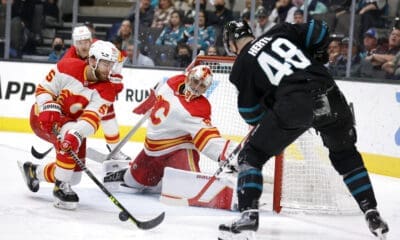Calgary Flames
Understanding Advanced Stats, Part Five: Quality of Teammates, Zone Starts, Zone Finish and GVT

Advanced stats are not perfect and are mostly useless as evaluators of talent (like pretty much any other stat) without context, and the bigger the sample size the more accurate a stat will become-ideally, for hockey, this means at least an 82 game season.
I understand some people might have issues when we bring up things like PDO, GVT, CorsiREL and other non-traditional ways of evaluation. In my opinion, these stats add to the game, and I don’t want someone to be lost when they read an article here because they don’t know what the hell Zone Start is or how it impacts a player’s stature.
By no means am I an expert when it comes to these things: I, too, still have a lot to learn. These are my interpretations; if I have something wrong please bring it up and I’ll edit the article accordingly.
With those things in mind, I present to you part five in a glossary of advanced stat terminology.
Quality of Team: QoT is exactly what you think it is-a way of measuring how good a player's teammates/shiftmates are. QoT is a relative plus/minus stat weighted by ice time with a player, much like QoC. Used in concert with other stats, QoT is a nice tool to see which players are benefiting from their linemates and which players are making their linemates better. The flaw with the stat is that it uses counting numbers, but like I said it is valuable when used in concert with other stats.
Zone Starts: Once again, a rather self-explainatory stat. ZS is a measurement of offensive shift starts compared to defensive shift starts. A player with a high ZS (>55%) is usually either being sheltered or is a highly offensive player while a player with a low ZS (<45%) is generally quite good at moving the puck up the ice or the coach has no idea what he's doing.
Zone Finish: The companion to ZS, ZF shows where a player ends his shift. Unlike ZS, ZF doesn’t really tell us anything of note until we pair it with ZS-a player with a positive ZS/ZF ratio is probably pretty good possession wise and knows how to move the puck in the right direction (eg. Jay Bouwmeester-51.7% ZS, 54% ZF). The best example of using ZS and ZF to shelter and bury players was last year with the Vancouver Canucks-the Sedin’s had a 70% ZS, while poor Manny Malhotra was given a 30% ZS. Props to Alain Vigneault though for utilizing his team’s strengths.
GVT: GVT stands for “Goals Versus Threshold”, and is basically hockey’s version of VORP-Value Over Replacement Player. In this context, “Threshold” refers to a player who is just barely NHL-caliber, so GVT is an approximation of how many goals a player contributes to a team relative to a completely average, 550k per year player. A player’s GVT is broken down into three parts: offensive GVT (goals created), defensive GVT (goals stopped) and shootout GVT. (The calculations to show those can be found here.) Now, GVT is a good tool to look at how players create wins for teams (if a player has a GVT of 13, he is technically worth more then two whole wins more then that threshold player), but there are some serious issues with it. First, it only uses counting numbers, which means that goalies (with a large TOI) get a huge bump and it doesn’t take into account in which situations a player is playing in-last year, Anton Babchuk had the 2nd highest GVT on the team. There is no way Babchuk was the 2nd most valuable player the Flames had last year; just watching him for one game would’ve told you that. All in all, a fun stat-but in my opinion, not something you want to put a lot of stock into unless you’re versed in a player’s underlying numbers.
Quick note-at BtN, ZS and ZF are called Ozone% and Fin Ozone%.
(Check out Behind the Net, Time on Ice, Hockey Analysis, Hockey Prospectus and Arctic Ice Hockey for all your stat-nerd needs.)
by Richard Hammond









